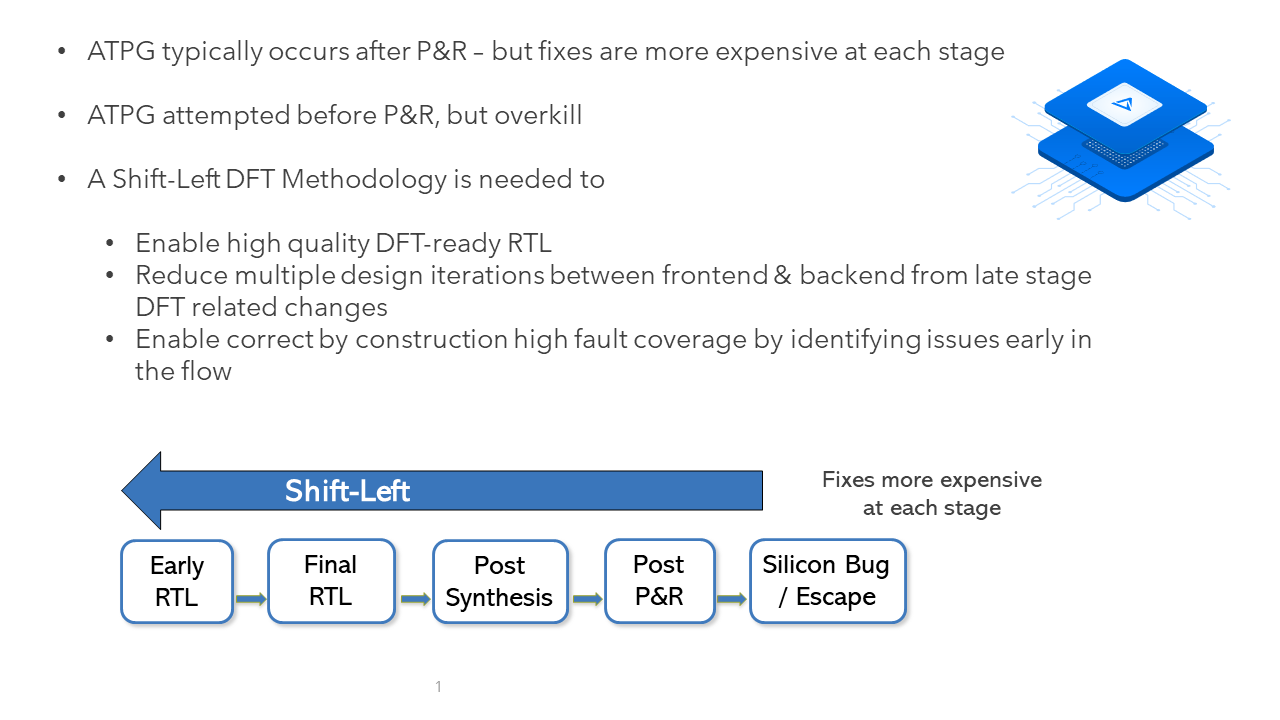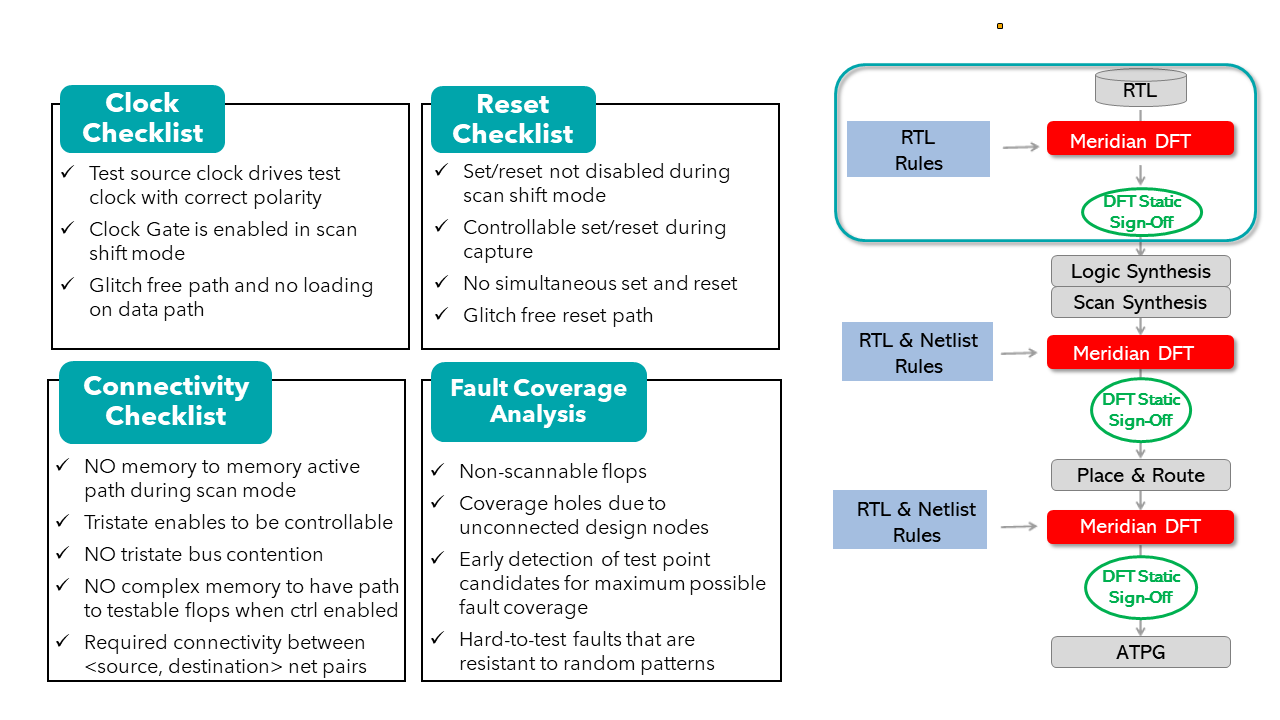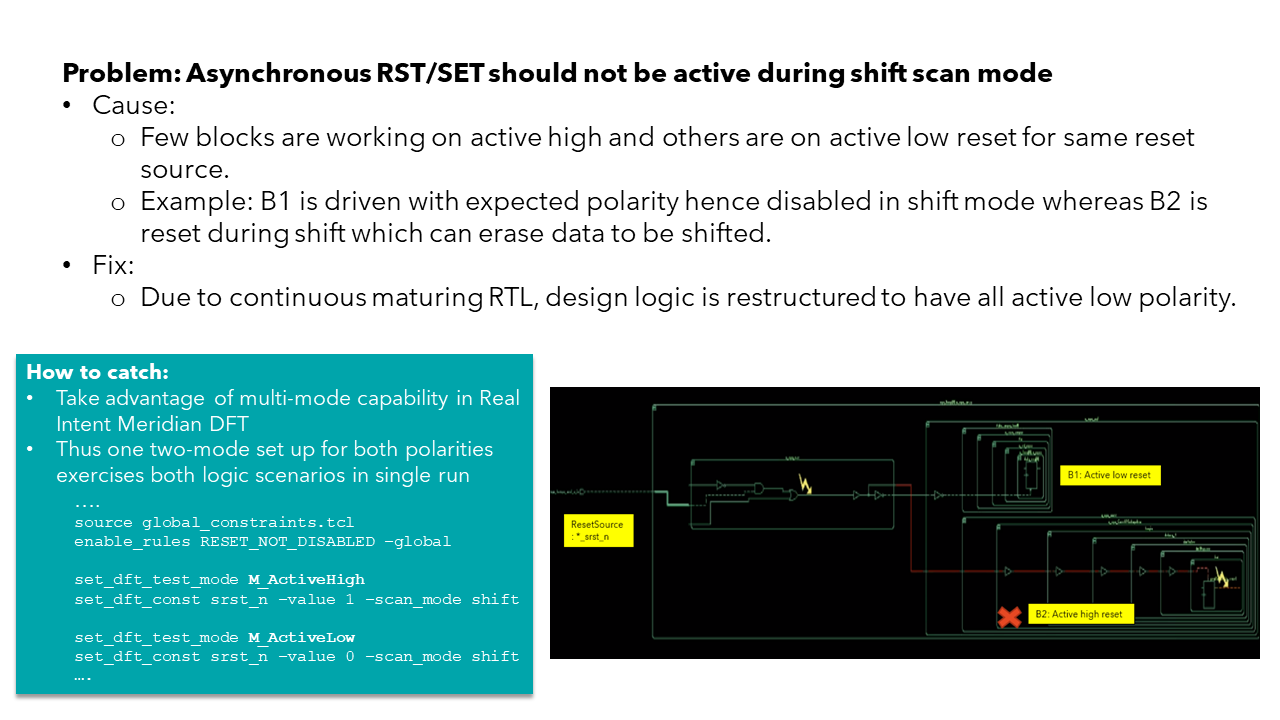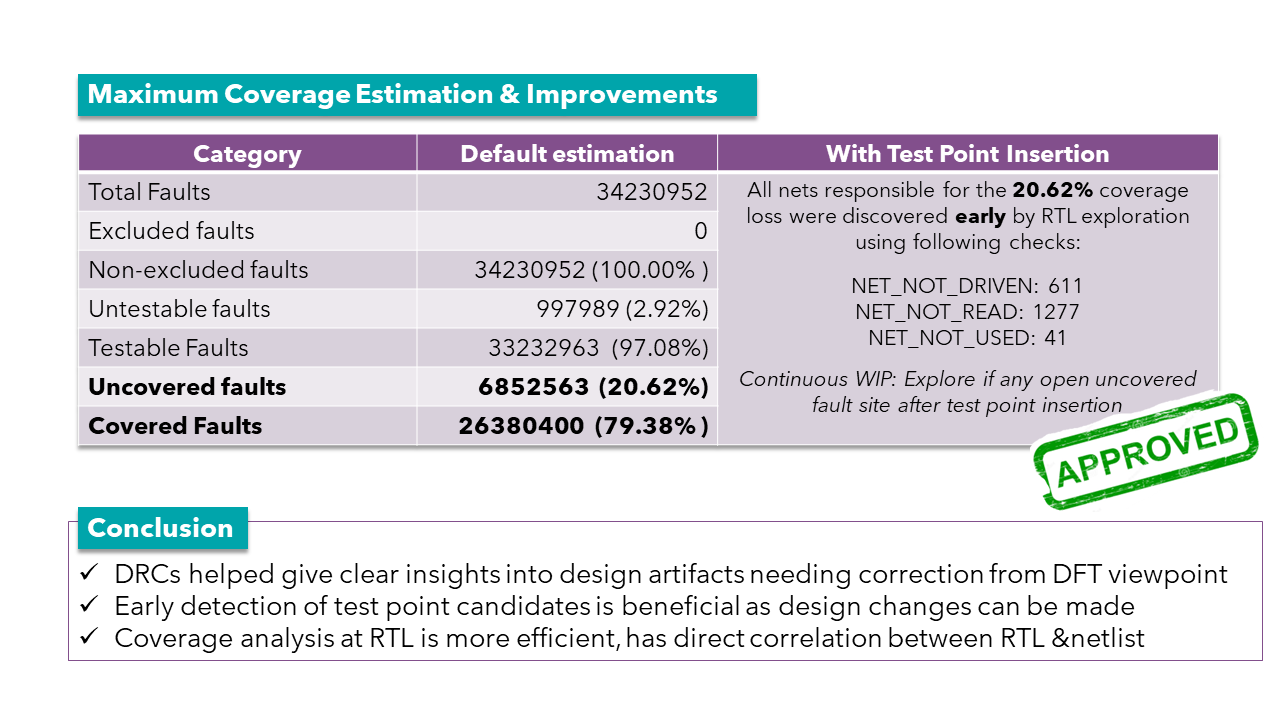Kinara: Shift Left DFT Sign-off Methodology for Edge AI Processor
DAC Case Study by Parag Dass & Venkat Busani of Kinara
Executive Summary: DAC 2022 Kinara case study (presented by Kanad Chakraborty of Real Intent)
Case Study Overview
This case study covers Kinara’s advanced DFT sign-off methodology to ensure their AI processor has high quality DFT-ready RTL and high fault coverage, while meeting tight delivery timeframes. Kinara deploys Real Intent Meridian DFT in this flow.
DFT Shift Left: Quality, Fault Coverage, & Faster Sign-Off
Kinara designs its ARA-1 AI processor with a specialized architecture for edge applications, including replicated cores and distributed memories.
The complex architecture of Kinara’s ARA-1 AI processor makes it important to ensure high-quality DFT-friendly RTL, so as to minimize design iterations between RTL and netlist for faster sign-off.
Kinara’s emphasis is on “shift-left” DFT multi-test-mode static sign-off. Fixes are less expensive when DFT bugs are found early. These bugs would likely be found at ATPG; however, fixing them after ATPG involves costly design iterations.
Kinara’s early DFT Sign-off involves
- Early checking of DFT DRC rules exhaustively for clocks, resets, & connectivity
- Enabling fault coverage analysis at RTL via early design exploration, e.g., early test point candidate detection, to achieve excellent correlation with ATPG fault coverage results
RTL DFT Sign-Off with Fault Coverage Analysis
Kinara performs early DFT sign-off using checklists of test clock, reset and connectivity rules.
Using the clock and reset checks, Kinara identifies clock and reset controllability and glitch violations.
With connectivity checks, tristate bus contention and other such issues are also identified early.
Early fault coverage analysis allows them to find sequential capture depth through non-scannable flops, coverage holes due to undriven or unread nets, detect test point candidates, and perform optional analysis of random-pattern resistant faults.
This early detection of test point candidates uses information computed by Meridian DFT and pre-fetched from test synthesis; it is applied at RTL for accurate correlation to ATPG fault coverage.
Multimode DFT Sign-Off with Bi-Polar Resets
Kinara has a novel use model for multi-test-mode DFT analysis at RTL. The chip has two blocks that are fed by a single, bipolar reset source. When the reset is active in one block, it is inactive in the second block.
This architecture lends itself naturally to two test modes, where the reset constraint is toggled between the two test modes for shift.
With multimode DFT Kinara can verify both blocks with opposite constraints on the reset signal, along with their other DFT constraints, in the same run.
Errors Identified & Corrected Early
Case 1: Kinara identified multiple test clocks that were not controllable from the test source clock through the clock generator block. They then modified the RTL to enable control paths from the test source clock to every test clock.
Case 2: Kinara discovered that not all flip-flops were driven by a test clock. They changed the RTL to route the test clock to every flip-flop.
Case 3: Kinara found high sequential depth paths traversing through memory blocks that caused loss of fault coverage. Kinara inserted scan flip-flops in the paths to reduce the sequential depth.
They also identified sequential propagation issues through non-scannable flip-flops due to sequential loops and deep sequential paths through such flip-flops. Kinara broke up the paths and loops with scannable flip-flops.
Case 4: Undriven nets created inaccurate coverage estimates, because following synthesis, the undriven nets would be connected to DFT logic. Kinara was able to improve fault coverage estimation by applying user-specified test points to the nets.
Kinara’s “Shift Left” DFT Methodology — Coverage Results
To achieve DFT sign-off with high fault coverage for their RTL, Kinara 1) applied DFT rules and fixed errors, 2) identified test point candidates, and 3) performed coverage analysis.
- Fixing the errors found by DFT rule checking achieved an estimated fault coverage of 79%. The integrated, interactive debug environment of iDebug provided a focused schematic that labeled the violations and improved debug efficiency.
- Identifying test point candidates on undriven nets and adding test points to the fault coverage analysis (without actually adding them to the design) raised the total fault coverage estimate to 97%.
- Coverage analysis allowed Kinara to visualize approximately 3% untestable faults in the schematic and cross-probe to the schematic source for the test points, violating flip-flops, and instances with highest number of uncovered faults.
Additionally, color-coding for uncontrollable, unobservable and constant nets assisted in identifying the coverage loss sources.
Kinara continued to perform RTL exploration using Meridian DFT rules to refine the design and reduce the percentage of untestable faults further.









